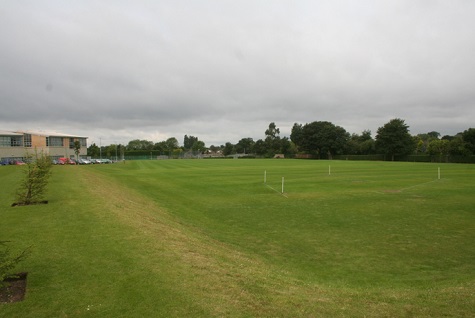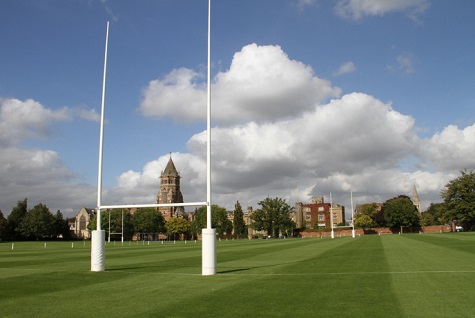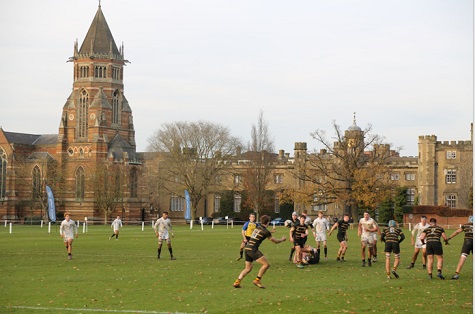As a former sports coach, an article featured on the BBC news website recently was quite disturbing in that there were reports of sport aid funding not being spent appropriately in primary schools.
Every year, each primary school in England receive a minimum of £16,000 from the government called the PE and Sport Premium. It has been in place since 2013, when then Prime Minister David Cameron wanted to build a legacy from the London Olympics on the back of repeated warnings about childhood obesity.
This ring-fenced PE cash has cost taxpayers in excess of £1.9bn so far. Every school is meant to report on its website what the money has been spent on, but not every school is using the money well. One teacher told BBC Sport that at their former school, they had been told there was no money left for PE and they'd just have to be "creative".

According to the article, other PE professionals have repeatedly claimed some schools simply copy and paste their reports year on year because Ofsted doesn't monitor them. One PE professional, who oversees a number of primaries, claimed last year they'd discovered £100,000 of £230,000 PE funding in their area had been spent inappropriately.
I firmly believe this money should have been directly spent on providing appropriate facilities, equipment or paying for coaches to deliver a sporting curriculum. It will be interesting to see what the outcome of these allegations will be.
Personally, I would like to see fully paid PE / sports coaches being brought back into primary schools with a national curriculum to help children become more active and healthy and help deliver the government’s new obesity strategy.
A raft of measures has been revealed as part of this new strategy to get the nation fit and healthy, protect themselves against COVID-19 and protect the NHS.
Obesity is one of the biggest health crises the country faces. Almost two-thirds (63%) of adults in England are overweight or living with obesity – and 1 in 3 children leave primary school overweight or obese, with obesity-related illnesses costing the NHS £6 billion a year.
Bring back competitive sports
The urgency of tackling the obesity time bomb has been brought to the fore by evidence of the link to an increased risk from COVID-19. For me, the way forward is to bring back a competitive sports programme in both primary and secondary schools.

And more importantly invest in both facilities and staff to deliver these healthy activities. School sports have been in decline for far too many years, especially in state schools, where pupils barely get two hours of curriculum sport a week. This contrasts with some private schools where their pupils are getting more than 12 hours of sport activity per week.
Also, the decline in the standard of maintenance of sport playing fields in schools has not helped. I see far too many school playing fields devoid of any decent regular maintenance, especially in state schools.
If we want to entice the children to become fit and healthy, we need to start an active culture in promoting far better outdoor sports facilities within schools.
All young people should have the opportunity to live healthy and active lives. A positive experience of sport and physical activity at a young age can build a lifetime habit of participation and is central to meeting the government’s ambitions for a world-class education system.
Physical activity has numerous benefits for children and young people’s physical health, as well as their mental wellbeing (increasing self-esteem and emotional wellbeing and lowering anxiety and depression). Children who are physically active are happier, more resilient and more trusting of their peers. Ensuring that pupils have access to sufficient daily activity can also have wider benefits for pupils and schools, improving behaviour as well as enhancing academic achievement.
It would seem from this report that the government has for years invested this money and no doubt much of it has achieved some success in improving access to sporting curriculums, but have we seen any real benefits in terms of improved playing pitch facilities?

I agree with many comments about investing in schools and getting competitive sport back on the school curriculum. I am and have been a school governor for 12 years at two schools and see, at first hand, the costs of running schools along with the current trends of target setting, based around the core academic subjects (maths, English, sciences), with little time allocated to physical education.
We need to address the balance and bring back opportunities for pupils to achieve recognition in a sporting activity. I always enjoyed participating in sport, especially when I was at school, and was able to represent my school at local and county levels.
I have coached sport in schools and see the enjoyment of those who participate. However, the sessions tended to be after normal school hours, and limited to one hour, not nearly enough time to develop skills and change children’s behaviour.
We need to see a massive change in the school curriculums to include physical activities. Bring back the PE teacher and dedicate 4 or 5 hours a week to teaching and giving pupils the opportunity to shine in another way (they are all not academic achievers).
The opportunity for young people to get involved in sport should start in primary schools, with the government setting aside ring fenced budgets to deliver sports activities.
The aim should be to introduce pupils to a variety of sports and ensure they remain active and interested and able to compete against themselves and other schools, and eventually progress to playing sport at local sports clubs.
The benefits will be enormous in terms of learning new skills, increasing fitness levels and, above all, giving them a sense of wellbeing.
Investment in playing surfaces
For this policy to work, the government will have to enable the schools to invest in their playing surfaces and provide PE staff who are able to deliver several hours of sport a week.
There will need to be a cultural change in schools to ensure this policy can work. Yes, there are many schools that have committed time and resources to promoting some sporting activities, but often they have been short term strategies that do not really lead to anything.
Healthy competition between pupils is the key to enrichment; the skills learnt and taken on board while participating in sport are essential attributes for pupil development.
In my role as TurfPro editor, I get to see many schools, and the ones that stand out are the ones that have invested in their pitches, providing excellently presented sports surfaces that are fit for purpose and encourage people to perform.
However, it is no good providing these pitches if we have not got the infrastructure in terms of PE teachers who can inspire their pupils to take part, perform and, above all, and offer a decent sporting curriculum to work with.
Once we have secured the changes in primary schools it would then graduate into the secondary schools system. By achieving this, we would see a massive difference in the attitude and wellbeing of pupils in all our state schools.